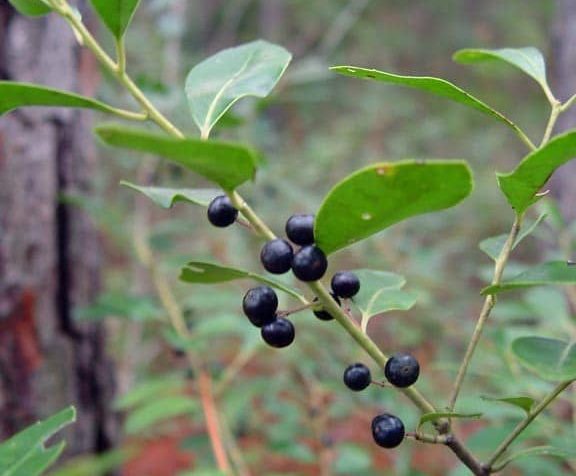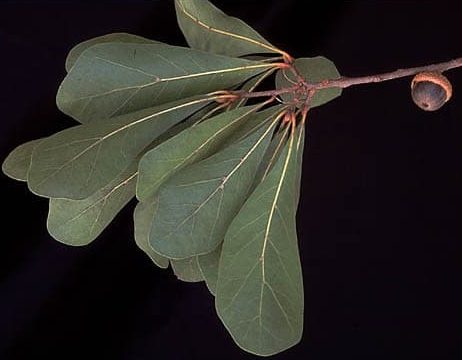Native Plant Guide with Audio

1. Saw palmetto, Serenoa repens
Rarely has an erect stem, usually growing on or just below the ground. Sharp spines on the petiole and dense growth provide ideal cover for many animals. Can live 500-700 years or more. Fruits have been used for centuries in the treating conditions of the prostate. Florida is the biggest source and producer of saw palmetto products.

2. Sawgrass, Cladium jamaicense
Actually a sedge, not a true grass, as defined by its triangular stem. Gets its name from the saw-like teeth on the leaf margins. Grows primarily in shallow freshwater marshes. Important as shelter for many animals. Seeds eaten by several bird species.

3. Coastal Plain Willow, Salix caroliniana
Wetland tree. Provides significant cover and some food for wildlife. Host plant to a wide diversity of butterflies and moths and is the only native larval host plant for the Viceroy butterfly. Inner bark and leaves yield the medicinal extract salicin (salicylic acid), the active ingredient in aspirin. Sometimes called the “toothache tree.”

4. Sweetbay, Magnolia virginiana
Also known as sweetbay magnolia, swampbay or swamp magnolia. Occurs naturally in moist and wet soils in swamps and along streams and ponds. Leaves are shiny green on top with fine whitish hairs below. Flowers are creamy white and fragrant. Leaves and twigs are browse for deer and cattle. Fruits are food source for squirrels, small rodents, wild turkeys, quail and song birds.

5. Slash Pine, Pinus elliottii
Indigenous to S.E. United States. Widely grown in timber plantations throughout Florida. Capable of reaching 100 ft. in height with 3-4 ft. diameter trunk. Needles grow in clumps of 2 or 3. Pine forests provide habitat for wild turkeys, white-tailed deer and many other species. Squirrels will cut open cones to get at seeds. Look for cone debris on boardwalks.

6. Southern Magnolia, Magnolia grandiflora
Smooth, leathery evergreen leaves that are alternate, 5–10 inches long, shiny on top and rusty below. Fragrant, creamy-white flowers, are cup-shaped, about 8 inches across, with 6 thick petals, wider at the tip. The flowers produce conelike seedpods that contain large red seeds. When the pods open, the seeds often fall from their place and hang by silky threads.

7. Wax-myrtle, Myrica cerifera
Also called bayberry. Adaptable to many habitats. Leaves contain aromatic compounds. Seminoles fermented leaves into a medicinal tonic. Female flowers develop into a fruit surrounded by a natural wax-like coating used in making bayberry candles. Fruit is a food source for many bird species.

8. Muscadine grape, Vitus rotundifolia
Typically, wild Muscadine bear dark fruit: however many wild varieties remain green through maturity. Wild bronze tinted varieties are often referred to as scuppernongs. Provides cover, browse and fruit for a wide variety of animals. First native grape species to be cultivated in N.A. dating back to the 16th century. Today there are hundreds of improved cultivars of Muscadine.

9. Gallberry, Ilex glabra
Commonly found in acidic soils including flatwood forests, sandy wetlands and frequently burned areas. Leaves have 3 – 5 spines, indented and only at the leaf tip. Fruit is a dry, round, shiny black drupe with five to seven seeds. Leaves can be used for making a tea and seeds are food source for many animals.

10. Sand live oak, Quercus geminata
Slower growing and generally smaller than the live oak. Extremely drought tolerant. Valuable for wildlife as food (acorns) and cover. Can be distinguished from other coastal oak species by the deeply furrowed, rough bark.

11. Water Oak, Quercus nigra
Also known as spotted oak or possum oak. Relatively short lived compared to other oaks, but a fast grower and reproducer. Often the most abundant species in its stands. Leaves are variable in shape but mostly broad and rounded at the top and narrow at the bottom. Acorns are light brown to nearly black and provide food for many animals including squirrels, white tailed deer and wild turkeys.

12. Yaupon holly, Ilex vomitoria
One of the primary ingredients in the famed “Black Drink” of SE indigenous cultures due to the high caffeine content of the leaves. Used as a substitute for teas during the American Revolution and Civil War. Seminoles used the bark as medicine for dementia and nightmares.
